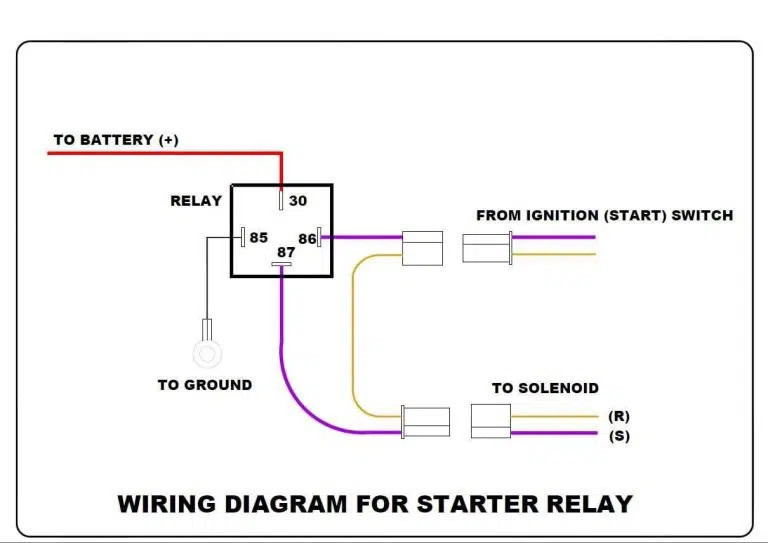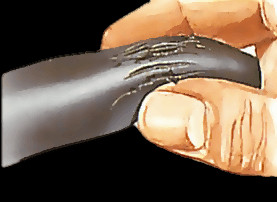**How To Change Differential Oil: A Comprehensive Guide**
Changing differential oil, or gear oil, is a crucial maintenance task for ensuring the longevity and performance of your vehicle’s drivetrain. At CARDIAGTECH.NET, we provide the tools and expertise to help you tackle this job efficiently and effectively, promoting smoother rides and preventing costly repairs. Let’s explore the step-by-step guide with useful tips.
1. Understanding the Differential and Its Oil
What is a Differential?
The differential is a vital component in your vehicle’s drivetrain, responsible for transmitting engine power to the wheels while allowing them to rotate at different speeds. This is particularly important when turning, as the outer wheel travels a greater distance than the inner wheel. Without a differential, your car would struggle to make turns smoothly, leading to instability and tire wear.
Why is Differential Oil Important?
Differential oil, also known as gear oil, lubricates the gears within the differential, reducing friction and wear. This high-pressure lubricant is essential for:
- Preventing Gear Wear: The gears inside the differential experience extreme pressure and friction. Proper lubrication minimizes wear and extends the lifespan of these components.
- Maintaining Performance: Clean and effective gear oil ensures smooth operation of the differential, optimizing vehicle performance.
- Dissipating Heat: Gear oil helps dissipate heat generated by friction, preventing overheating and potential damage.
When Should You Change Your Differential Oil?
The frequency of differential oil changes depends on your vehicle’s make, model, and driving conditions. However, as a general guideline:
- Regular Intervals: Most manufacturers recommend changing the differential oil every 30,000 to 60,000 miles.
- Severe Conditions: If you frequently tow heavy loads, drive in extreme temperatures, or engage in off-road driving, you may need to change the oil more frequently, around every 15,000 to 30,000 miles.
- Consult Your Manual: Always refer to your vehicle’s owner’s manual or service manual for specific recommendations.
What Happens if You Don’t Change Your Differential Oil?
Neglecting to change your differential oil can lead to several problems:
- Increased Friction and Wear: Over time, the oil degrades and loses its lubricating properties, leading to increased friction and wear on the gears.
- Overheating: Inadequate lubrication can cause the differential to overheat, potentially damaging the gears and other components.
- Gear Failure: Severe wear and overheating can eventually lead to gear failure, requiring costly repairs or replacement of the entire differential.
2. Gathering the Necessary Tools and Materials
Before you begin, ensure you have all the necessary tools and materials. This will streamline the process and minimize potential delays. You’ll need:
Essential Tools
| Tool | Purpose |
|---|---|
| Wrench or Socket Set | To remove the drain and fill plugs. Make sure you have the correct size for your vehicle. |
| Drain Pan | To collect the old gear oil. |
| Fluid Pump | To add new gear oil to the differential. A pump makes the process much easier and cleaner. |
| Jack and Jack Stands | To safely lift and secure your vehicle. Never work under a vehicle supported only by a jack. |
| Torque Wrench | To tighten the drain and fill plugs to the manufacturer’s specified torque. |
| Gloves | To protect your hands from the gear oil, which can be messy and have a strong odor. |
| Rags or Shop Towels | To clean up any spills or drips. |
| Safety Glasses | To protect your eyes from splashes. |
| Wheel Chocks | To prevent the vehicle from rolling while you’re working on it. |
Required Materials
| Material | Purpose |
|---|---|
| Gear Oil | The correct type and weight of gear oil for your vehicle. Consult your owner’s manual for specifications. |
| Drain Plug Washer (if needed) | Some vehicles require a new washer for the drain plug each time it’s removed. |
| Limited Slip Additive (if applicable) | If your vehicle has a limited-slip differential, you may need to add a friction modifier to the gear oil. |
3. Step-by-Step Guide to Changing Differential Oil
Follow these steps to safely and effectively change your differential oil.
Step 1: Prepare Your Vehicle
- Safety First: Park your vehicle on a level surface, engage the parking brake, and use wheel chocks to prevent rolling.
- Lift the Vehicle: Use a jack to lift the vehicle and securely place jack stands under the frame. Ensure the vehicle is stable before proceeding.
Step 2: Locate the Differential
- Identify the Differential: The differential is typically located in the center of the rear axle (for rear-wheel-drive vehicles) or integrated into the transaxle (for front-wheel-drive vehicles).
- Find the Drain and Fill Plugs: Locate the drain and fill plugs on the differential housing. The drain plug is usually at the bottom, while the fill plug is located on the side.
Step 3: Drain the Old Gear Oil
Alt text: Close-up view of the differential drain plug located on the rear axle of a vehicle, indicating the point for draining old gear oil during a differential service.
- Position the Drain Pan: Place a drain pan under the drain plug to catch the old gear oil.
- Remove the Drain Plug: Use the appropriate wrench or socket to loosen and remove the drain plug. Be careful, as the oil may be hot.
- Allow Complete Drainage: Let the gear oil drain completely. This may take 15-20 minutes.
Step 4: Replace the Drain Plug
- Inspect the Drain Plug: Check the drain plug and washer for any damage. Replace the washer if necessary.
- Reinstall the Drain Plug: Tighten the drain plug to the manufacturer’s specified torque using a torque wrench. Overtightening can damage the differential housing.
Step 5: Add New Gear Oil
Alt text: A mechanic removing the fill bolt from the differential housing, preparing to refill the differential with fresh gear oil during routine maintenance.
- Locate the Fill Plug: Identify the fill plug on the differential housing.
- Remove the Fill Plug: Use the appropriate wrench or socket to remove the fill plug. This will allow you to add new gear oil.
Step 6: Pump in New Gear Oil
Alt text: A mechanic using a fluid pump to inject new gear oil into the differential housing through the fill hole, ensuring proper lubrication of the gears inside.
- Use a Fluid Pump: Attach a fluid pump to the gear oil container. Insert the pump nozzle into the fill hole.
- Fill to the Correct Level: Slowly pump gear oil into the differential until it reaches the bottom of the fill hole. The oil should start to dribble out when it’s full.
- Limited Slip Additive: If your vehicle has a limited-slip differential, add the specified amount of friction modifier before filling with gear oil.
Step 7: Reinstall the Fill Plug
- Inspect the Fill Plug: Check the fill plug and washer for any damage. Replace the washer if necessary.
- Reinstall the Fill Plug: Tighten the fill plug to the manufacturer’s specified torque using a torque wrench.
Step 8: Clean Up and Lower the Vehicle
- Wipe Excess Oil: Clean any excess gear oil from the differential housing.
- Lower the Vehicle: Carefully lower the vehicle from the jack stands.
Step 9: Final Check
- Test Drive: Take the vehicle for a short test drive to ensure the differential is functioning properly.
- Check for Leaks: After the test drive, check the drain and fill plugs for any leaks. Tighten them further if necessary.
4. Choosing the Right Gear Oil
Selecting the correct gear oil is crucial for the performance and longevity of your differential. Consider the following factors:
Viscosity
Viscosity refers to the oil’s resistance to flow. The correct viscosity is essential for proper lubrication. Refer to your vehicle’s owner’s manual for the recommended viscosity grade. Common grades include:
- 75W-90: Suitable for many passenger cars and light trucks.
- 80W-90: Often used in older vehicles or those operating in moderate climates.
- 85W-140: Recommended for heavy-duty applications or vehicles operating in high temperatures.
API Rating
The American Petroleum Institute (API) classifies gear oils based on their performance characteristics. The most common ratings are:
- GL-4: Suitable for hypoid gears in axles with moderate loads.
- GL-5: Designed for hypoid gears in axles with severe loads and contains more extreme pressure additives.
- GL-6: Not commonly used today, but designed for heavily loaded hypoid gears with high offset.
Always use the API rating recommended by your vehicle’s manufacturer.
Synthetic vs. Conventional
- Synthetic Gear Oil: Offers superior performance, better temperature stability, and longer service life compared to conventional oil. It is ideal for vehicles operating in extreme conditions.
- Conventional Gear Oil: A more affordable option suitable for standard driving conditions.
Limited Slip Differential Considerations
If your vehicle has a limited-slip differential (LSD), you may need gear oil with a friction modifier or a separate additive. Check your owner’s manual or consult with a mechanic to ensure you use the correct product.
5. Understanding Limited Slip Differentials (LSDs)
What is a Limited Slip Differential?
A limited slip differential (LSD) is designed to improve traction by limiting the amount of wheel spin when one wheel loses grip. Unlike a standard open differential, which allows all the power to go to the wheel with the least resistance, an LSD redirects torque to the wheel with more traction.
How Does an LSD Work?
LSDs use various mechanisms to transfer torque, including:
- Clutch Packs: These use a series of clutch plates to limit the speed difference between the wheels.
- Viscous Couplings: These use a silicone-based fluid that becomes more viscous as the speed difference increases, providing resistance.
- Torsen Differentials: These use worm gears to transfer torque to the wheel with more traction.
Why is Special Gear Oil Needed for LSDs?
LSDs require gear oil with specific friction modifiers to function correctly. These modifiers help the clutch packs or other mechanisms operate smoothly and prevent chatter or binding. Using the wrong gear oil can lead to:
- Reduced Performance: The LSD may not function as intended, resulting in poor traction.
- Noise and Vibration: Incorrect lubrication can cause chatter or vibration during turns.
- Premature Wear: Lack of proper lubrication can lead to increased wear and damage to the LSD components.
How to Choose the Right Gear Oil for Your LSD
- Consult Your Manual: Always refer to your vehicle’s owner’s manual for the recommended gear oil specifications and any specific requirements for your LSD.
- Check the Label: Look for gear oil that is specifically formulated for limited-slip differentials or that includes a friction modifier additive.
- Consider Synthetic Options: Synthetic gear oils often provide better performance and protection for LSDs.
6. Troubleshooting Common Issues
Even with careful preparation, you may encounter some common issues when changing differential oil. Here are some tips to troubleshoot them:
Stuck Drain or Fill Plug
- Apply Heat: Use a heat gun or torch to apply heat to the plug area. This can help loosen the threads.
- Use a Penetrating Oil: Apply a penetrating oil such as PB Blaster to the threads and let it sit for several minutes before attempting to remove the plug.
- Use an Impact Wrench: An impact wrench can provide the necessary torque to break the plug loose.
Rounded or Damaged Plugs
- Use a Socket with Damaged Bolt Removal: These sockets are designed to grip rounded or damaged bolts.
- Hammer on a Smaller Socket: Try hammering a slightly smaller socket onto the plug. This can provide a tighter grip.
- Weld a Nut to the Plug: As a last resort, you can weld a nut to the plug to provide a new surface for a wrench to grip.
Difficulty Pumping Oil
- Check the Pump: Ensure the pump is properly assembled and functioning correctly.
- Check the Oil Viscosity: Very thick oil may be difficult to pump. Warm the oil slightly to reduce its viscosity.
- Check for Obstructions: Make sure there are no obstructions in the pump or fill hole.
Leaks After the Change
- Check the Plug Torque: Ensure the drain and fill plugs are tightened to the manufacturer’s specified torque.
- Inspect the Washers: Replace the washers if they are damaged or worn.
- Use Thread Sealant: Apply a small amount of thread sealant to the plug threads to prevent leaks.
7. The Importance of Proper Disposal
Used gear oil is a hazardous waste and must be disposed of properly.
Why Proper Disposal Matters
- Environmental Protection: Improper disposal can contaminate soil and water, harming wildlife and ecosystems.
- Legal Compliance: Many jurisdictions have laws regulating the disposal of used oil.
How to Dispose of Used Gear Oil
- Recycling Centers: Take the used oil to a local recycling center or auto parts store that accepts used oil.
- Collection Events: Some communities hold collection events for hazardous waste, including used oil.
- Avoid Improper Disposal: Never pour used oil down the drain, into the sewer, or onto the ground.
8. Benefits of Regular Differential Maintenance
Regular differential maintenance, including oil changes, offers several benefits:
- Extended Component Life: Proper lubrication reduces wear and extends the lifespan of the gears and other components.
- Improved Performance: Clean and effective gear oil ensures smooth operation of the differential, optimizing vehicle performance.
- Reduced Repair Costs: Preventing wear and damage can save you money on costly repairs in the long run.
- Enhanced Safety: A properly functioning differential contributes to vehicle stability and control, enhancing safety.
9. CARDIAGTECH.NET: Your Partner in Automotive Maintenance
At CARDIAGTECH.NET, we understand the importance of proper automotive maintenance. That’s why we offer a wide range of tools and equipment to help you perform essential tasks like changing differential oil.
Our Products
We provide:
- High-Quality Tools: Wrenches, sockets, torque wrenches, fluid pumps, and more.
- Reliable Equipment: Jacks, jack stands, and other equipment to ensure your safety.
- Expert Advice: Our team of experienced technicians can provide guidance and support.
Why Choose CARDIAGTECH.NET?
- Quality Products: We offer only the highest quality tools and equipment from trusted brands.
- Competitive Prices: We strive to provide affordable solutions for all your automotive maintenance needs.
- Excellent Customer Service: Our team is dedicated to providing exceptional customer service and support.
10. Frequently Asked Questions (FAQs)
1. How often should I change my differential oil?
Refer to your vehicle’s owner’s manual, but generally, every 30,000 to 60,000 miles is recommended, or more frequently under severe driving conditions.
2. What type of gear oil should I use?
Consult your vehicle’s owner’s manual for the recommended viscosity and API rating.
3. What is a limited slip differential (LSD) and why does it matter for gear oil?
An LSD improves traction by limiting wheel spin. It requires gear oil with friction modifiers to function correctly.
4. Can I use synthetic gear oil instead of conventional?
Yes, synthetic gear oil often provides superior performance and protection.
5. What do I do with the old gear oil after changing it?
Dispose of used gear oil at a local recycling center or auto parts store that accepts used oil.
6. How do I know if my differential needs new oil?
Signs include unusual noises, vibrations, or difficulty turning.
7. What happens if I use the wrong gear oil?
Using the wrong gear oil can lead to reduced performance, noise, vibration, and premature wear.
8. Can I change the differential oil myself, or should I take it to a mechanic?
Changing differential oil is a relatively straightforward task that many DIY enthusiasts can perform.
9. What tools do I need to change differential oil?
You’ll need a wrench or socket set, drain pan, fluid pump, jack and jack stands, torque wrench, gloves, rags, safety glasses, and wheel chocks.
10. How do I check the differential oil level?
Remove the fill plug and check if the oil reaches the bottom of the fill hole.
Changing your differential oil is a straightforward maintenance task that can significantly extend the life of your vehicle’s drivetrain. By following this comprehensive guide and using the right tools and materials from CARDIAGTECH.NET, you can ensure your differential operates smoothly and efficiently for years to come.
Ready to get started? Contact CARDIAGTECH.NET today at 276 Reock St, City of Orange, NJ 07050, United States, or reach out via WhatsApp at +1 (641) 206-8880. Visit our website at CARDIAGTECH.NET for all your automotive tool needs. Our knowledgeable team is here to assist you with any questions or concerns. Invest in your vehicle’s longevity and performance with CARDIAGTECH.NET – where quality meets reliability.





